Headline testing is essential.
The importance of headlines in communication, marketing, advertisements, image, or matters related to user experience has been apparent for a long time.
Headlines are an essential element of a website's structure. They have a crucial role in the creation of functional information architecture.
They're as helpful as they're problematic. It's impossible to imagine a communicative website without them. A website that easily enters a dialogue with a user.
Headlines are of no minor importance in optimizing a website's conversion rate.
Mainly because the contents of a website are more often scanned than read from "cover to cover."
Even such a superficial description of the role, function, and benefits of improving the text layer, including headlines on websites, raises questions about methods of testing the effectiveness of headlines and techniques and tricks for creating them.
It's worth spending more time and paying more attention to headline testing and optimization.
Effects provided by headline testing can be seen in statistics and revenues and profits.
That being said...
How do headlines influence a positive and satisfactory user experience? What is headline testing?
How to perform headline testing? What are the most important benefits of headline testing? Does UX writing influence the cost of a website?
Today we invite you to learn about a subject related to UX writing and UX research. We'll tell you how to increase the effectiveness of the text layer and how to offer better UX through words.
So, let's dive right in! We invite you to read on!
What is a headline?
Let's start with a somewhat obvious matter that needs clarification.
To answer the question — What is a headline? — we need to say that it's a short or elliptic sentence.
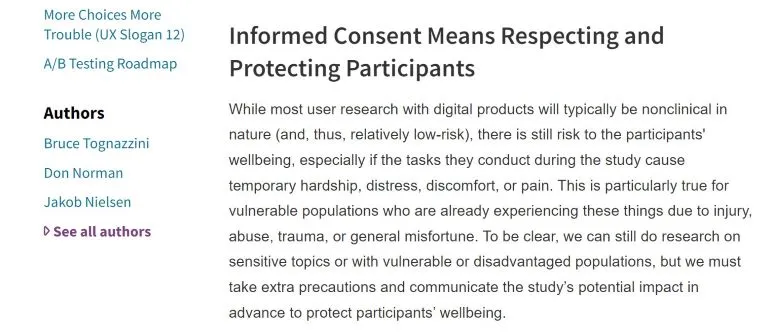
A headline is a sentence that is additionally highlighted visually (e.g., with the font size or typeface); sometimes, it's also distinguished graphically (e.g., with color).
A headline is a sentence that draws a reader's attention and directs their interest.
It's also often meant to prompt a website user to take action (e.g., add something, read the contents of a section, or type something into a search engine).
It's a challenging task about which authors affiliated with Nielsen Norman Group remind in the articles "How Users Read on the Web," "Applying Writing Guidelines to Web Pages," and the report "How People Read Online: The Eyetracking Evidence."
Contents presented on a site, headlines in particular, to increase their effectiveness and usefulness for users, according to researchers from NN Group, should above else use language that isn't cognitively challenging or burdening.
In the opinion of NN Group's researchers, the cost of interaction with the text layer of a website should be as small as possible.
NN Group's researchers also noticed that from this point of view, the most problematic language is the marketing language with fancy associations, hyperboles, and symbols. And this matter is often omitted.
A headline, text that is easy to scan that can be quickly and seamlessly found, is the most attractive for the user.
It's worth remembering that reading on computer screens (and even more so on screens of mobile devices) is tiring for the eyes and around 25% slower than reading on paper.

Moreover, website users aren't willing to invest energy into reading a site's content. So it's not surprising that they pay attention to the headlines first.
Headlines on websites naturally draw attention. They're an element of a site that users look for first. For many users, consumers of digital content, headlines are the only thing they read. And with which they want, have time to familiarize themselves.
Most often, website users start familiarizing themselves with a site's content by reading its headlines.
Thus, headlines are first-contact elements responsible for the first impression effect.
Headlines can make a user feel at home or uncomfortable, alien, and out of place. In short, they polarize feelings very intensely.
Headlines control users' attention and are like signposts. Literally and visually define the content of blocks of text which hide under them.
They're a summary but also evoke emotions and spark curiosity.
A functional and attractive headline should meet requirements determined by the HEADS formula, according to which a headline:
- Heralds
- Entices
- Advertises
- Dresses Up
- Summarizes.
It's also said that headlines should be maximally:
- Concise
- Communicative, understandable
- Exciting, cognitively engaging
- Persuasive, prompting action
- Catchy
- Converting.
Headlines are also responsible for the brand's image, attachment, and loyalty.
The effectiveness with which a given headline fulfills the abovementioned functions can be measured with various metrics.
What is headline testing?
Headlines can be tested with A/B testing, thanks to which it's possible to select the best headline that achieves the goals the most satisfactorily.
Headline testing is a research method that focuses on quantitative results and allows testing different headline variants on various audiences. In short, it focuses on creating different headlines for the same article, blog post, or other pieces of media.
The goal is to identify the most effective one, a winning headline, that achieves the best quantitative results.
However, the effect that a headline is supposed to achieve can be very different.
A headline can help you:
- Maintain user attention
- Encourage users to spend more time on a site
- Motivate users to fill out forms or perform any other desirable action, for example, click on a banner.
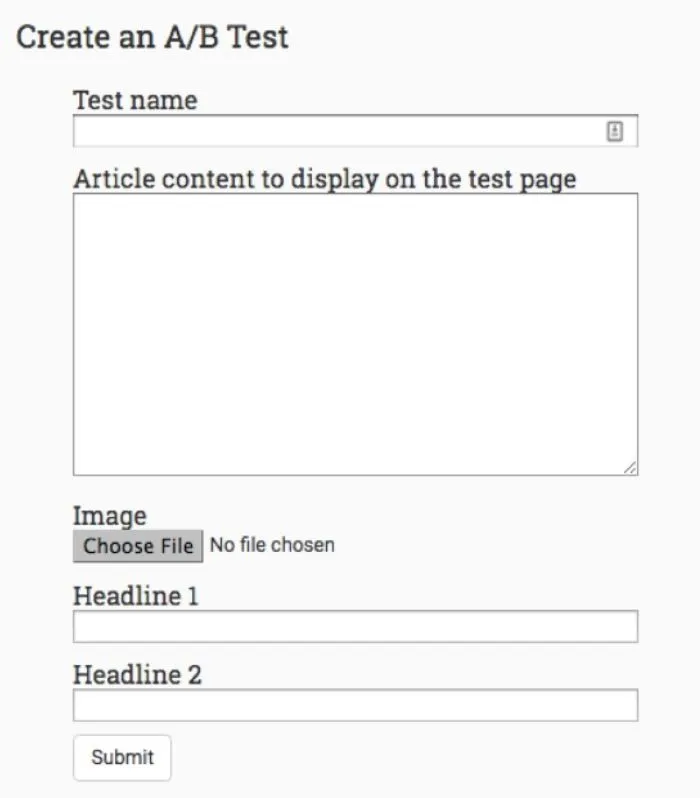
Therefore, optimizing headlines based on headline testing results can have various purposes.
Headlines can be written to persuade a website user to click, share, fill out fields, scroll, and maintain interest in a site's content.
Hence, headline testing or, specifically, results of comparative tests are connected to other metrics.
Metrics like a click-through rate, average reading speed, number of shares, or bounce rate.
How to perform headline testing?
As we've written, headlines have an important communicative, business, and image role connected to user experience.
Along with the widespread availability of tools created with headline testing in mind, the role of this method grows.
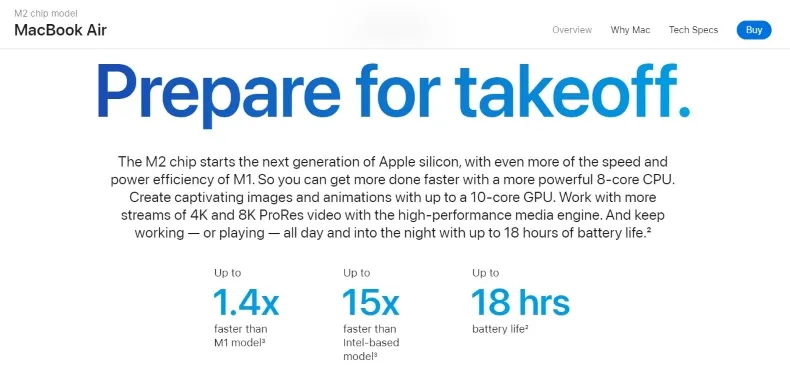
On the market, you can find at least several dozen apps for conducting A/B tests, including those with functions that make it easier to test the verbal layer of a website.
We recommend the article "11 A/B Testing Tools for 2022" by Noorisingh Saini for those interested in these tools.
Of course, other tools besides A/B tests can help you optimize your headlines, such as Headline Analyzer from CoSchedule, which, among others, offers a free plugin for WordPress that allows you to track the headline score (which assists you with creating appealing and engaging headlines) and provides access to word banks.
Choosing appropriate software for conducting headline testing is always a matter of needs, capabilities (e.g., in terms of budget and organization), research goals, and competencies.
As a rule, headline testing involves creating at least two variants that are presented to users. This usually is done by brainstorming and coming up with various headline ideas. Once you create them, show one headline to the first half of the audience and the other to the other half and see which performs better. Thanks to that, you can eliminate less appealing variants and present the best-performing headline choice to the users.
Naturally, the number of variants can be higher, but you need to remember that from the statistical point of view (maintaining statistical significance), it's necessary to test them on a much larger sample.
Headline testing aims to choose from headline variations the option that achieves better results — usually expressed in percentages.
Using professional software to test and create headlines is simple, reasonable, and convenient as well, as it makes it possible to automate testing to a large extent.
And most professional research tools can achieve this effect.
Generally speaking, research tools continuously expand and can realize various tasks and goals (more or less connected).
Most of the leading solutions are a combination of these features. Useful functions for UX researchers collected under one roof allow them to perform complex tests.
Tools for A/B tests offer a wide range of basic and additional functions, among which you can find the following:
- Analytical tools for campaign results — quantitative and qualitative analysis and more specialized analyses (e.g., cohort analysis)
- Customer Journey mapping
- Option to perform surveys
- Conversion tracking
- Ability to record activity on a screen
- Real-time reporting
- Customer and results segmentation
- Testing in various browsers
- Results in the form of illustrative charts
- Advanced planning of A/B test campaigns
- Role and access management.
The majority of tools don't require complicated programming actions. They're pretty intuitive and make creating and performing individual tests and complex research strategies possible.
While performing headline testing, it's worth:
- Testing elements that are particularly exposed and where traffic is the highest.
- Cautiously draw conclusions from individual tests. A regular and strategic approach to testing, content optimization, and information architecture elements is recommended.
- Paying attention to different configurations of variables (e.g., length of a headline, form, language, place in the site's structure).
- Studying the effectiveness in the long term; allows you to see trends and time-based, seasonal, and occasional preferences.
- Studying different user groups.
- Analyzing headlines in terms of content, image, persuasion, and SEO.
- Controlling visual variables such as the font size and typeface, text color, size ratio of the headline to the block of text, number of headlines on a given page, and contrast.
Besides choosing an optimal tool and defining a goal, headline testing also requires copywriting skills and the ability to write microcopy.
Ultimately, research tools only indicate the best variant (in a quantitative and largely indisputable way).
Whether it's the most efficient and effective variant depends on the quality of compared headlines.
It's also worth keeping in mind that the success of optimization depends on the quality of microcopy.

As a side note, we wrote more about creating content for web and mobile applications in the article "Less is more: UX Writing and Microcopy."
What's more, the benefits of performing a headline test include the following:
- Decision-making based on data
- A better understanding of your audience
- High-quality feedback
- Saving money and time.
How to create effective headlines?
First, a general note. There is no universal or magical recipe for creating an effective headline.
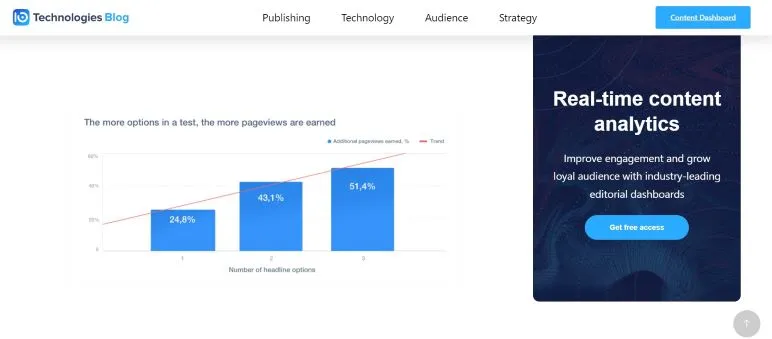
All guides that suggest "magical" solutions that will guarantee the success of headlines are misleading.
They make a promise that, unfortunately, cannot be simply fulfilled.
Headline testing is a process that requires time, patience, rational strategy, and understanding that there are no shortcuts.
There are at least a dozen conventions for creating headlines, and each time the most effective one will be the one that best fits the subject, type of content, and place of the headline in the structure, as well as the needs and preferences of the website users.
The click-baiting potential that will improve your organic search traffic will be fulfilled by the variant that will meet the needs of the target audience.

In other words, the recipe for a headline doesn't hide in mimicking internet patterns but in the understanding that the final result is a matter of orchestrating multiple factors and reliable tests as well as trying out and testing different solutions and comparing effects.
It's also worth keeping statistics in mind. Drawing hasty conclusions from data with low representativeness or statistically insignificant data is compelling and risky.
However, there is another risk of hastily accepting the results as final and conclusive.
Finding a "patent" for writing headlines can obscure the fact that the result can change over a more extended period along with the increase of views of a given variant, that there might be an even more perfect variant, or that you encountered a short-term anomaly.
You need to remember that discovering the best or most optimal headline variant during testing is proportional to the number of views. It also requires a higher number and more diverse variants.
Discovering "what works," "what doesn't work," or "what moderately works" requires more data.
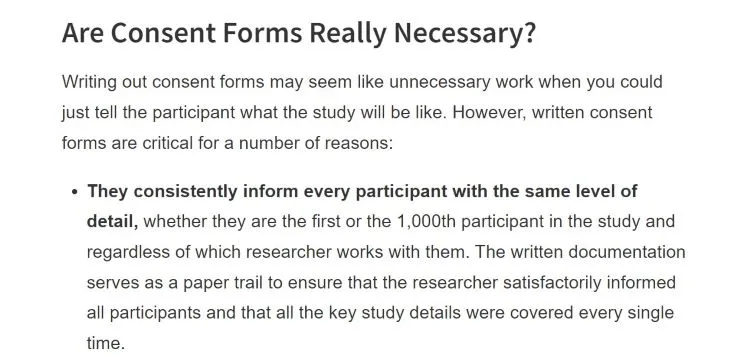
As a rule, the only sensible action is to continuously test or at least regularly based on experimenting and meticulous tracking of reactions of various audiences.
In the case of headline testing that was performed unreliably (e.g., on too small a sample, in too short a time, with a small pool of variants), it can lead to drawing wrong conclusions and making wrong decisions.
Strongly emotional adjectives, wordplay, numbers, questions, and sensational news are only possibilities, and they aren't always effective and recommended.

Writing headlines that achieve set goals doesn't simply boil down to shocking, scaring, and inspiring interest in the user.
Appealing to curiosity and ignorance, which can be harmful and cause loss, unreliable benefits, secrecy, elitism, a sense of danger, fear, and negative emotions, is not always advisable or beneficial.
In many cases, this type of "tabloid" message causes a lot of damage to the brand's image, even if it attracts attention.
Hence, you should remember that a headline, above else, should:
- Appeal to desirable by the user values
- Strike at the heart of the problem
- Be understandable, simple, and accessible in terms of language
- Positively absorbing — it should appeal to positive emotions
- Fulfill determined expectations of a specific target audience and avoid universal attractors.
Headline Testing. Summary
- Headlines are an essential element of a website's structure, regardless of whether it's about an article or a description of an offer.
- Headlines on websites have a crucial role in creating a functional information architecture and navigation.
- An attractive headline for a user is easy to see and has a simple message in terms of content and language.
- For the majority of users, headlines are the only content they will familiarize themselves with. Their readability is crucial.
- A functional and attractive headline should meet requirements determined by the HEADS formula.
- Headlines prepared for a website can be subject to A/B tests.
- A/B tests make it possible to select the variant of a headline that is the most effective from the business owner's perspective.
- It's necessary to test headlines on a statistically significant sample.
- Most tools for A/B tests have a wide range of functions, thanks to which UX researchers can perform complex tests and check variants to be implemented on a website.
- There is no universal and magical recipe for creating an effective headline.
- Headline testing is a process that requires time, patience, and rational strategy.
- An effective headline results from orchestrating many factors and performing reliable tests.
- Headline testing should be a continuous and regular practice based on experimenting. Doing it from time to time is a mistake. It means that the function of headlines isn't understood.
- While creating headlines for websites, it's worth appealing to desirable, by the user, values and meeting their expectations.







